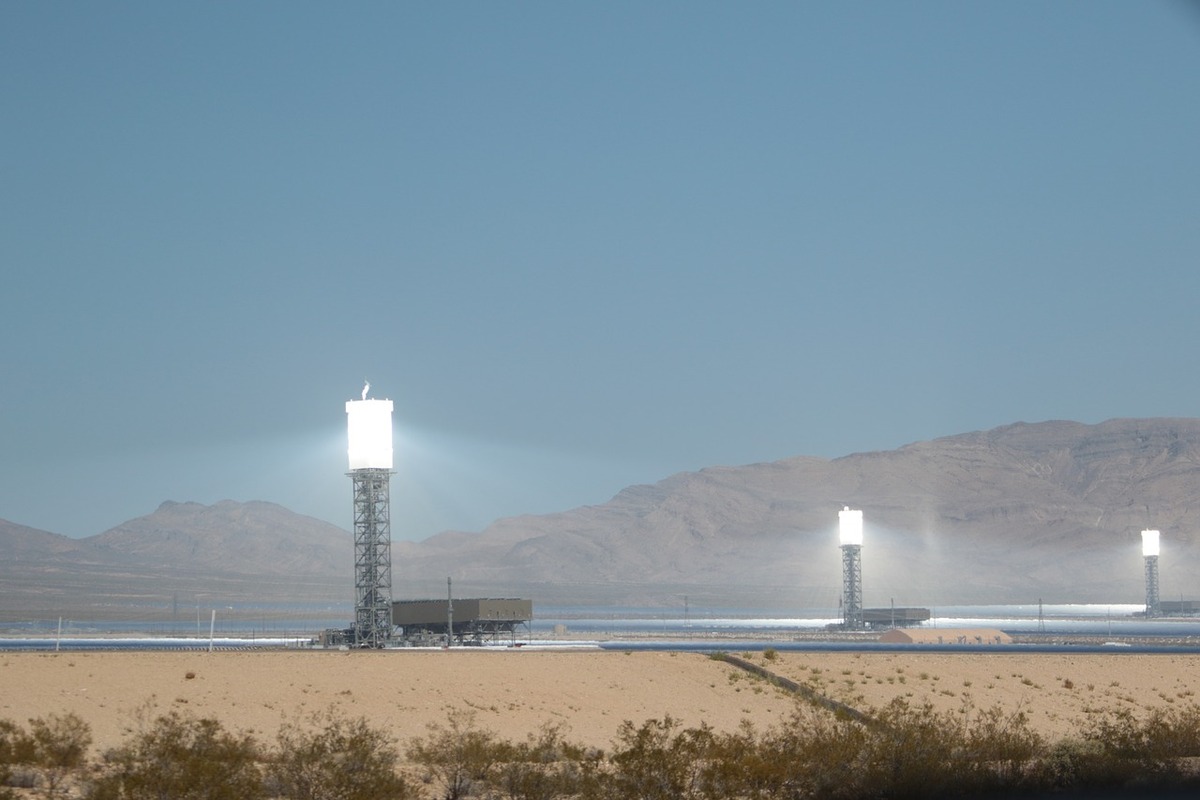With laptop and math for a better future: Generating power with sunlight
Atomic and coal power have taken care of. The world needs new, clean energy. But how can we design power plants that do not emit CO2 or produce nuclear waste? And can mathematics and computers help answer this question
help? The answer is yes! In this workshop, students work in small teams to plan a solar power plant that generates energy using mirrors and solar radiation. If you enjoy mathematics, like to work with computers and perhaps wonder how you can use them to improve our future, this is the right place for you!
The students get to know so-called Fresnel power plants. This is one of the innovative technologies that are traded as future models of energy production for sunny countries. The way these power plants work is relatively simple: mirrors reflect sunrays onto a pipe through which water is passed. When heated, the water is turned into steam which drives an electricity-generating turbine. As the position of the sun changes during the day, the angle of the mirrors must be adjusted throughout the day.
The workshop has been developed in cooperation with scientists from industry and RWTH Aachen University, who are researching in the field of development and optimization of Fresnel power plants.
The students deal with the question of how the power plant must be constructed and operated so that as much energy as possible is generated. The students evaluate real data with the help of the simulation program with a graphical feedback and train technical skills in the fields of trigonometry and functions.
There are two versions of the workshop.
Variant for the intermediate level: This variant is recommended for classes that deal with angles and the trigonometric functions at the time of the CAMMP day. Thus the module serves as a supplement to the lessons. However, the module can also be carried out without the treatment of the trigonometric functions.
Contents: Geometry, trigonometry, angular relationships in a triangle
Previous knowledge: pairs of angles
Participants: Mathematics courses from the 8th grade
_________________________________
Variant for the upper level: In this variant, the learning module offers a link to the calculation of integrals over upper and lower sums and the representation of sunrays as straight lines in parameter form. Besides the physical-technical modeling of the power plant, the focus is especially on the optimisation of different power plant parameters. The students creatively develop their own optimization methods and compare different modeling approaches when formulating optimization problems.
Contents: Geometry, trigonometry, angular relationships in a triangle, numerical integration, straight lines in parameter form, optimization
Previous knowledge: pairs of angles, straight lines in parameter form
Participants: Mathematics courses from the 11th grade
_________________________________
Duration: Project day (4 - 6 hours) or as project time (4 - 5 double hours)
Created by: Martin Frank, Philipp Otte, Pascal Richter, Christina Roeckerath, Sarah Schönbrodt
Registration: Appointments can be arranged individually by e-mail.
